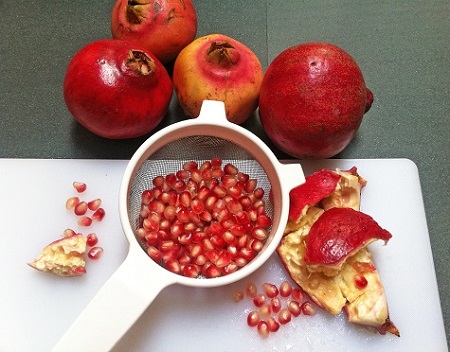 Do you avoid whole pomegranates because you’re afraid of the mess they make when you try to pry their ruby jewels from pith and peel? Fear no more. Here’s the amazing trick that will save you spatters, stains, and money.
Do you avoid whole pomegranates because you’re afraid of the mess they make when you try to pry their ruby jewels from pith and peel? Fear no more. Here’s the amazing trick that will save you spatters, stains, and money.
BTW, the verb may be “to seed,” but what you’re hunting are actually arils. The seed is that hard little nubbin at the bottom of each aril. A good, ripe pomegranate’s arils have lots of juicy flesh surrounding the small seed.
Have a deep bowl of water handy. Cut an ‘X’ in the blossom end of the fruit deep enough so that you’ll be able to work your thumbs into the fruit.
Submerge the pomegranate in the water and break it into large pieces. This is an early season pomegranate variety that has pink arils instead of deep ruby or garnet.
Working under water, use your fingers to loosen the kernels, scoop them into a strainer and drain. That’s it.
Next week, I’ll show you how to use your freshly mined arils in a colorful salad. It’s my family’s Thanksgiving favorite–a refreshing contrast to the holiday’s rich foods.
Fall is pomegranate season, so odds are in your favor for finding good “poms.” The best pomegranates are large and heavy for their size. They have a fresh-looking rind; avoid fruits with shriveled, dry looking skins. Some splitting is thought to be an indicator they are ripe and bursting with juicy arils, but avoid fruit with cracks that show signs of mold or bruising. Store pomegranates in the refrigerator to keep their skins from turning leathery, which makes it harder to break into the fruit. The anti-oxidant-rich arils will keep about a week in the refrigerator.

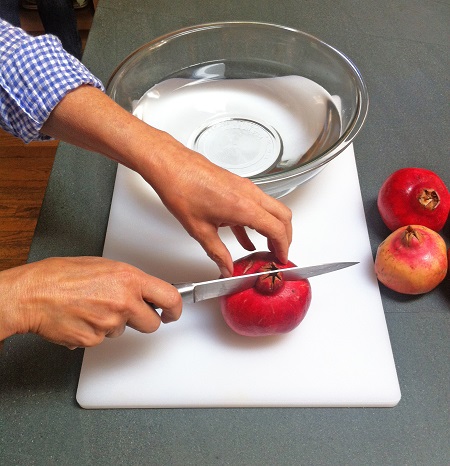



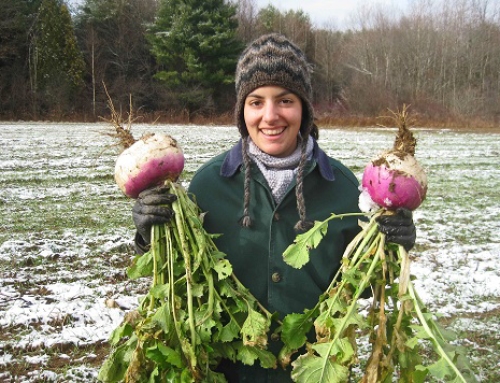


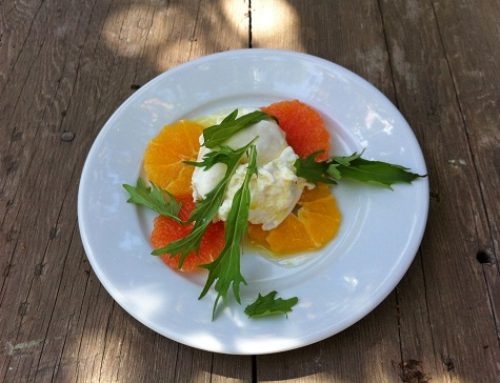
I would not put them in water as I like the juice. Just add it to my salad so w I’m ll take the time to get them out depending even tho its not always easy
Hi Theony, and thanks for writing. I love pomegranate juice, too! You shouldn’t lose any juices with my seeding method. It’s designed to loosen the kernels without breaking them. Give it a try and see what you think.
How do you eat the rails? Do you swallow the seeds? Or do you masticate them and spit them out?
Thx
Yes, you eat the arils, seeds and all. Enjoy!
I’ve used the “whack with a wooden spoon” method. It works, no splatters!
I trust you to remove this link if you prefer not to publish it:
http://lifehacker.com/5895852/deseed-a-pomegranate-in-10-seconds-using-a-wooden-spoon
Good to know! Has anyone else tried this method? I gave it a try and ended up with a bit of mess:
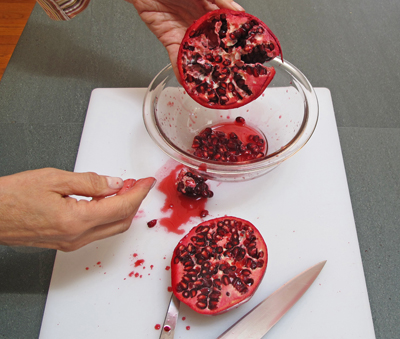
Stephen Facciola, master cataloguer of edible plants, emailed me to say that those ruby jewels aren’t arils either. They are sarcotesta(e), a very obscure term meaning “fleshy seed coat.” Don’t feel bad about your botany-geek creds; until recently Steve, too, was under the impression they were arils. And that’s saying something. Steve is the author/publisher of the indispensable Cornucopia II, A Source Book of Edible Plants: http://amzn.to/HG1s5f. No foodist should be without it.
Interesting pom-seeding method suggested by both food stylist Dianne from New Zealand and cheesemaker extraordinare Mary from Humboldt County, CA. My question to you both: How much red splatter do you get with your method?
There is an easier way – score at the diameter- split in half – slightly loosen peel and white pith around cut edge. Turn cut edge down over a bowl and smack skin pretty hard with a wooden spoon several times as you go around the pomegranate. Seeds fall out – very little white falls. So fast.
fabulous tip. I can’t wait to try it out. Up to now I had found the best method was to cut the pom in half through the equator, hold it over a bowl and whack it firmly with a wooden spoon – the arils would then just drop in the bowl.